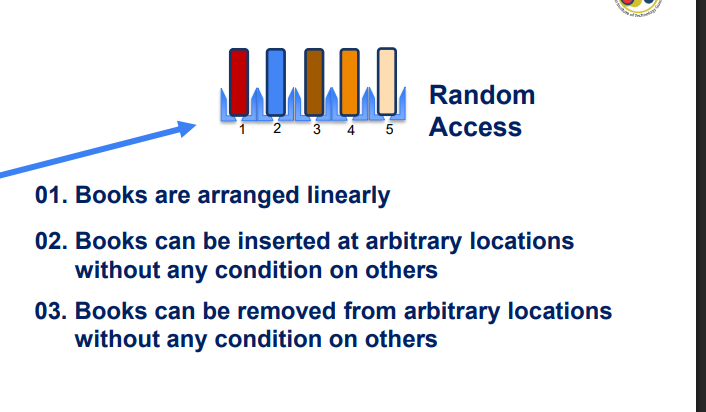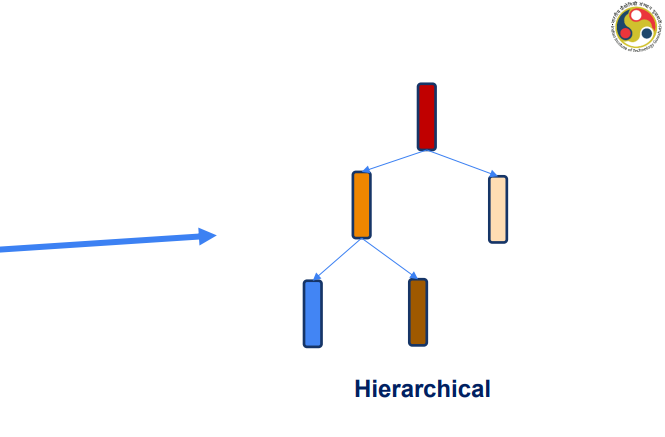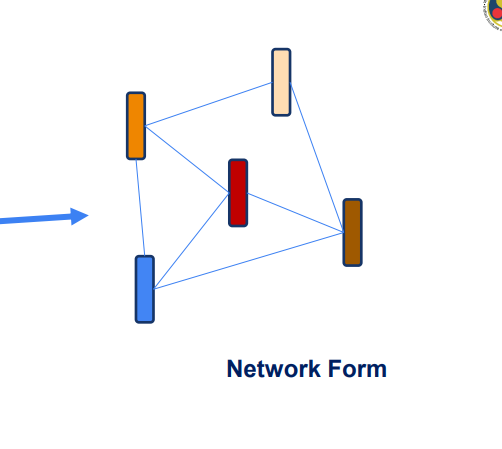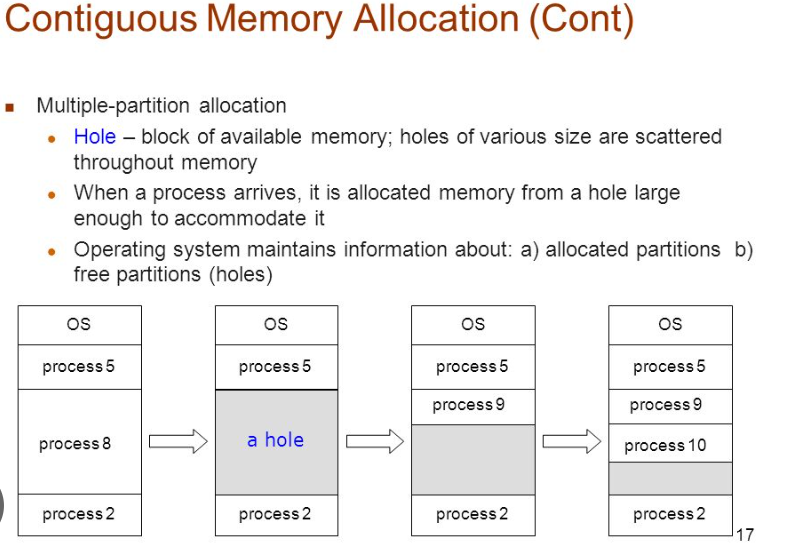DA110 WEEK 1
1/106
Earn XP
Description and Tags
WEEK 1
Name | Mastery | Learn | Test | Matching | Spaced |
|---|
No study sessions yet.
107 Terms
Algorithm
A
well-defined list of
finite
unambiguous steps
for solving a problem.
Data Structure
Defines a data collection of
data values,
logical relationship among them, and the
operations that can be applied on the data.
Scenario I characteristic

Scenario II characteristic

Scenario III characteristic

Scenario II
Last-in, First-out
Scenario III
First-in, First-out
Scenario IV
Hierarchical structure used to organize information based on levels of
importance or authority.

Scenario V
Network Form : A type of organizational structure characterized by a decentralized network of interconnected organizations or individuals that collaborate to achieve common goals.

Data Structure
Organization + Operations + Algorithm
Program
Data Structure + Algorithm
Data
Collection of raw facts
Data element
It is a logical unit adding up to a data.
Data type
It specifies the type of value or values of data elements forming a data.
Contiguous Memory Allocation
Pattern where the data elements of a data structure will be stored at contiguous (next or together in sequence.) memory locations in memory

Non-Contiguous Memory Allocation
Pattern where the data elements of a data structure will be stored at non-contiguous arbitrary locations in memory.This method allows for efficient use of memory by allocating space as needed without requiring contiguous blocks.

Contiguous Memory Allocation advantages
Advantages include
ordering,
Random Access Memory, and
no additional memory needed for management,
leading to efficient CPU usage and faster access times.
Contiguous Memory Allocation disadvantages
Disadvantages include
Static Allocation,
OS Defragmentation,
Un-used Memory and
Large RAM requirement
Non-contiguous Memory Allocation Advantages
Advantages include better memory utilization, reduced fragmentation, and flexibility in allocating memory blocks.
Non-contiguous Memory Allocation Disadvantages
Disadvantages include Additional memory is needed and Data Access may need to traverse through the other data elements.
Creation
Create an empty instance of a data structure.
Insertion
Insert a data element into an instance of a data structure.
Deletion
Delete a data element from an instance of a data structure.
Updation
Change the value of a data element
Searching
Search for the existence or non-existence of a data element.
Traversal
Visits every data element in an instance of a data structure.
Sorting
Order the data elements either in ascending or descending order.
Merging
Combines data elements of two or more data structures to one.
Input Specified
Input to an algorithm should be clearly specified. An algorithm can have zero or more inputs.
Output Specified
Output of an algorithm should be clearly specified. An algorithm has one or more outputs.
Definiteness
Every step of an algorithm should be unambiguous.
Finiteness
Every algorithm should terminate after a finite number of steps.
Effectiveness
The steps of an algorithm should be sufficiently basic and doable by a person in a finite time with pencil and paper.
Complexity of Algorithm
Includes Time Complexity and Space Complexity.
Classification of Data Structure
Includes Primitive vs Non-primitives, Linear vs Nonlinear, Homogeneous vs Heterogeneous, and Static vs Dynamics.
Non-primitives data structures
Array, Linked List, Stack and Queues, Tree/Binary tree, Hash, Graph
Array
A collection of a finite number of homogeneous data elements stored at contiguous memory locations.
INDEX
Defines the location and ordering of the data elements in an array.
LOWER BOUND
Defines the location of the first element in an array.
UPPER BOUND
Defines the location of the last element in an array.
SIZE (of an array)
UPPER BOUND – LOWER BOUND +1
Types of Array
One-Dimensional, Multi-Dimensional
2(two)-Dimensional array
An array of one dimensional arrays.
3(three)-Dimensional array
An array of two dimensional arrays.
Number of 1D arrays
Number of rows in a 2D array.
Number of Columns
The number of elements in each 1D array
Size of 2D arrays
|Columns| x |Rows|
Size of 3D array
|Plates| x |Columns| x |Rows|
BASE address
The address of the first element in memory
𝐸𝑓𝑓𝑒𝑐𝑡𝑖𝑣𝑒 𝐴𝑑𝑑𝑟𝑒𝑠𝑠 𝑜𝑓 𝐴 𝑖 for 1D arrays
A = 𝑏𝑎𝑠𝑒 𝑎𝑑𝑑𝑟𝑒𝑠𝑠 + (𝑖 − 𝐿𝐵) × 𝑘
Row major order
Arranging the elements in memory row-wise.
Column major order
Arranging the elements in memory column-wise.
Address of 𝐴 𝑖 𝑗 for 2D arrays in Row major order
𝐴𝑑𝑑𝑟𝑒𝑠𝑠 𝑜𝑓 𝐴 𝑖 𝑗 = 𝐵𝑎𝑠𝑒 𝑎𝑑𝑑𝑟𝑒𝑠𝑠 + 𝑖 − 𝐿𝐵𝑅 × 𝐶𝑜𝑙 + 𝑗 − 𝐿𝐵𝐶 𝑘
Address of 𝐴 𝑖 𝑗 for 2D arrays in Column major order
𝐴𝑑𝑑𝑟𝑒𝑠𝑠 𝑜𝑓 𝐴 𝑖 𝑗 = 𝐵𝑎𝑠𝑒 𝑎𝑑𝑑𝑟𝑒𝑠𝑠 + 𝑗 − 𝐿𝐵𝐶 × 𝑅𝑜𝑤 + 𝑖 − 𝐿𝐵𝑅 𝑘
Operations on Array Data Structure
Create, Display/Traverse, Search, Deletion, Modification/Update, Insertion
Create Operation
It creates an empty Array, allocates the required memory in RAM
Two ways to create an array in C
Static memory allocation during compile time or dynamic memory allocation during run time.
Compile time
The memory is reserved at compile time.
Run time
Created using a function called malloc.
Display/Traversal Operation
Visit all the elements in the array
Search Operation
Given an element, check if it is present in the array
Time Complexity
Worst Case: The element is not found or found at the last index. Time complexity is 𝜃(𝑛)
Insertion Operation
Insert an element at an arbitrary index 𝑖 ≥ 0.
Deletion Operation
Delete an element from an arbitrary index 𝑖 ≥ 0.
Update Operation
Replace the value at 𝑖 ≥ 0 by another value.
Sparse Matrix
A special type of matrix with a relatively high proportion of zero elements.
Some Special Sparse Matrix
Triangular Matrices, Diagonal and Tri-diagonal Matrices
Task for Left Lower Triangular Matrix
Store only the non-zero elements in memory
𝐴 of A[ i ][ j ] for the Left Lower Triangular Matrix
𝑖 𝑗 = 𝑏𝑎𝑠𝑒 𝑎𝑑𝑑𝑟𝑒𝑠𝑠 + ቇ 𝑖 − 𝐿𝐵𝑅)(𝑖 − 𝐿𝐵𝑅 + 1 2 + (𝑗 − 𝐿𝐵𝐶 × 𝑘
Right Lower Triangular Matrix
𝑖 𝑗 = 𝑏𝑎𝑠𝑒 𝑎𝑑𝑑𝑟𝑒𝑠𝑠 + 𝑖 − 𝐿𝐵𝑅)(𝑖 − 𝐿𝐵𝑅 + 1 2 + 𝑗 − 𝐿𝐵𝐶 − (𝑈𝐵 𝑅 − 𝑖 × 𝑘
Diagonal Matrix
A[i][i] = base address + (i − LBR) × k
𝑨 for Tri-Diagonal Matrix
𝑖 𝑗 = 𝑏𝑎𝑠𝑒 𝑎𝑑𝑑𝑟𝑒𝑠𝑠 + 𝑖 − 𝐿𝐵𝑅 − 1 × 3 + 2 + (𝑗 − 𝑖 + 1) × 𝑘
Abstract Data Type (ADT)
Abstract data type is a way of separating the implementation of a data structure, from its usage.
Abstract Data Type
Is a way of separating the implementation of a data structure from its usage.
Abstract Data Type
Members include member data and member functions. Access specifiers include private and public.
Abstract Data Type Advantages
Client uses ADT without knowing internal implementation details. Implementer can update the ADT without affecting the client program.
Non-primitive Data Structures
Array, Linked List, Stack and Queues, Tree/Binary tree, Hash, Graph
Compile Time Array Creation
Static memory allocation
Run Time Array Creation
Dynamic memory allocation
Benefits of Using Abstract Data Types
Data Hiding, Inheritance and Encapsulation
Formula to Determine Size of 2D Arrays
Number of Columns x Number of Rows
Formula to Determine Size of 3D Arrays
Number of Plates x Number of Columns x Number of Rows
Arrays are generally _, as datatypes are the same.
Homogenous
Data Structures may be classified as _
Heterogenous or Homogenous
Arrays are since their data elements are of the same type.
Homogenous
Arrays are considered a data structure
Linear
Data Structures are classified as
Linear or Non-Linear
Function is uses to create Dynamic Arrays in C.
malloc()
Two main methods of allocating arrays in C
Compile and Run Time
Different Array Operations
Insert, Delete, Search, Display/Traversal, Create, Update
Array Search - Best Case Time Complexity
0(1)
Array Search - Avverage Case Time Complexity
0(n)
Main Purpose of an Array Search Function
Check if Element is Present and if Not Present
Condition for Insertion into Array
i >= 0
Different Steps of Array Insertion Algorithm
Free the index, Store Element, Update the # of Elements
Best Case Insertion Scenario Represents a _ Time Complexity
Constant
Last Step of Array Deletion Algorithm
Reduce UB by One -- UB = UB - 1
Number of Movements of Array Elements in Worst-Case Deletion Scenario
n-1 Elements Involved
Matrix of Relatively High Proportion of Zero Elements
Sparse Matrix
Two Ways to Represent and Store a Sparse Matrix in Memory
Store All Elements Including Zeroes or store only non-zero elements